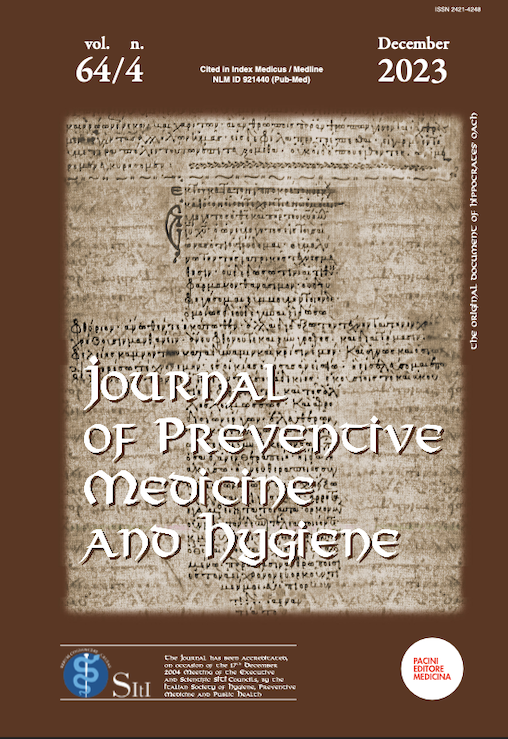Abstract
Aim: This study investigated the risk factors for the development of carbapenem-resistant Klebsiella pneumoniae (CRKP) infections in adult patients in intensive care units (ICUs).
Methods: A multicentre case-control study was conducted in ICUs in three tertiary hospitals in Turkey. The cases were patients culture-confirmed CRKP and a condition associated with healthcare-associated infections. Two controls were randomly selected for each case from among all other patients with an ICU stay at least as long as that of the corresponding case patient. A proportional semiparametric subdistribution hazards regression model was used to assess risk factors for CRKP infection. ICU discharge and non-CRKP-related deaths were treated as competing risks.
Results: A total of 120 patients, 44 cases, and 76 controls were included in the analysis. Of the controls, 32 were discharged from the ICU and 44 died without acquiring CRKP infection. Endotracheal intubation (hazard ratio [HR]: 1.96, 95% confidence interval [CI]: 1.00–3.868) and type 2 diabetes mellitus (HR: 1.57, 95% CI: 0.888–2.806) were associated with an increased risk of CRKP infection, whereas carbapenem exposure (HR: 0.47, 95% CI: 0.190–1.1175) and the presence of a nasogastric tube (HR: 0.49, 95% CI: 0.277–0.884) were associated with a decreased risk of CRKP infection.
Conclusions: Enteral nutrition support via a nasogastric tube may be associated with a reduced risk of CRKP-resistant infections in ICU patients. This hypothesis should be tested with a well-designed study.
References
2. Zheng X, Wang J, Xu W, Xu J, Hu J (2017) Clinical and molecular characteristics, risk factors and outcomes of Carbapenem-resistant Klebsiella pneumoniae bloodstream infections in the intensive care unit. Antimicrob Resist Infect Control 6:102 . https://doi.org/10.1186/s13756-017-0256-2
3. Humphries RM, Yang S, Kim S, Muthusamy VR, Russell D, Trout AM, Zaroda T, Cheng QJ, Aldrovandi G, Uslan DZ, Hemarajata P, Rubin ZA (2017) Duodenoscope-Related Outbreak of a Carbapenem-Resistant Klebsiella pneumoniae Identified Using Advanced Molecular Diagnostics. Clin Infect Dis 65:1159–1166 . https://doi.org/10.1093/cid/cix527
4. Holt KE, Wertheim H, Zadoks RN, Baker S, Whitehouse CA, Dance D, Jenney A, Connor TR, Hsu LY, Severin J, Brisse S, Cao H, Wilksch J, Gorrie C, Schultz MB, Edwards DJ, Nguyen KV, Nguyen TV, Dao TT, Mensink M, Minh VL, Nhu NTK, Schultsz C, Kuntaman K, Newton PN, Moore CE, Strugnell RA, Thomson NR (2015) Genomic analysis of diversity, population structure, virulence, and antimicrobial resistance in Klebsiella pneumoniae, an urgent threat to public health. Proc Natl Acad Sci 112:E3574–E3581 . https://doi.org/10.1073/pnas.1501049112
5. Paczosa MK, Mecsas J (2016) Klebsiella pneumoniae: Going on the Offense with a Strong Defense. Microbiol Mol Biol Rev 80:629–661 . https://doi.org/10.1128/MMBR.00078-15
6. Xu L, Sun X, Ma X (2017) Systematic review and meta-analysis of mortality of patients infected with carbapenem-resistant Klebsiella pneumoniae. Ann Clin Microbiol Antimicrob 16:18 . https://doi.org/10.1186/s12941-017-0191-3
7. Shields RK, Nguyen MH, Chen L, Press EG, Potoski BA, Marini RV, Doi Y, Kreiswirth BN, Clancy CJ (2017) Ceftazidime-Avibactam Is Superior to Other Treatment Regimens against Carbapenem-Resistant Klebsiella pneumoniae Bacteremia. Antimicrob Agents Chemother 61: . https://doi.org/10.1128/AAC.00883-17
8. Evans SR, Harris AD (2017) Methods and issues in studies of CRE. Virulence 8:453–459 . https://doi.org/10.1080/21505594.2016.1213473
9. Tsioutis C, Eichel VM, Mutters NT (2021) Transmission of Klebsiella pneumoniae carbapenemase (KPC)-producing Klebsiella pneumoniae: the role of infection control. J Antimicrob Chemother 76:i4–i11 . https://doi.org/10.1093/jac/dkaa492
10. Zhou B, Latouche A, Rocha V, Fine J (2011) Competing risks regression for stratified data. Biometrics 67:661–670 . https://doi.org/10.1111/j.1541-0420.2010.01493.x
11. Marimuthu K, Ng OT, Cherng BPZ, Fong RKC, Pada SK, De PP, Ooi ST, Smitasin N, Thoon KC, Krishnan PU, Ang MLT, Chan DSG, Kwa ALH, Deepak RN, Chan YK, Chan YFZ, Huan X, Zaw Linn K, Tee NWS, Tan TY, Koh TH, Lin RTP, Hsu LY, Sengupta S, Paterson DL, Perencevich E, Harbarth S, Teo J, Venkatachalam I, CaPES Study Group (2019) Antecedent Carbapenem Exposure as a Risk Factor for Non-Carbapenemase-Producing Carbapenem-Resistant Enterobacteriaceae and Carbapenemase-Producing Enterobacteriaceae. Antimicrob Agents Chemother 63: . https://doi.org/10.1128/AAC.00845-19
12. Liu P, Li X, Luo M, Xu X, Su K, Chen S, Qing Y, Li Y, Qiu J (2018) Risk Factors for Carbapenem-Resistant Klebsiella pneumoniae Infection: A Meta-Analysis. Microb Drug Resist Larchmt N 24:190–198 . https://doi.org/10.1089/mdr.2017.0061
13. Ruiz J, Gordon M, Villarreal E, Frasquet J, Sánchez MÁ, Martín M, Castellanos Á, Ramirez P (2019) Influence of antibiotic pressure on multi-drug resistant Klebsiella pneumoniae colonisation in critically ill patients. Antimicrob Resist Infect Control 8:38 . https://doi.org/10.1186/s13756-019-0484-8
14. Kreymann KG, Berger MM, Deutz NEP, Hiesmayr M, Jolliet P, Kazandjiev G, Nitenberg G, van den Berghe G, Wernerman J, Ebner C, Hartl W, Heymann C, Spies C (2006) ESPEN Guidelines on Enteral Nutrition: Intensive care. Clin Nutr 25:210–223 . https://doi.org/10.1016/j.clnu.2006.01.021
15. Arslan F, Caskurlu H, Sarı S, Dal HC, Turan S, Sengel BE, Gul F, Yesilbag Z, Eren G, Temel S, Alp E, Gol Serin B, Kose S, Calık S, Tuncel ZT, Senbayrak S, Sarı A, Karagoz G, Tomruk SG, Sen B, Hizarci B, Vahaboglu H (2019) Risk factors for noncatheter-related Candida bloodstream infections in intensive care units: A multicenter case-control study. Med Mycol 57:668–674 . https://doi.org/10.1093/mmy/myy127
16. Ltd BPGL and RPC (2000) Immune enhancing enteral nutrition reduced mortality and acquired infections in intensive care unit patients with sepsis. Evid Based Nurs 3:120–120 . https://doi.org/10.1136/ebn.3.4.120
17. Heyland DK, Stephens KE, Day AG, McClave SA (2011) The success of enteral nutrition and ICU-acquired infections: a multicenter observational study. Clin Nutr Edinb Scotl 30:148–155 . https://doi.org/10.1016/j.clnu.2010.09.011
18. Wischmeyer PE, Hasselmann M, Kummerlen C, Kozar R, Kutsogiannis DJ, Karvellas CJ, Besecker B, Evans DK, Preiser J-C, Gramlich L, Jeejeebhoy K, Dhaliwal R, Jiang X, Day AG, Heyland DK (2017) A randomized trial of supplemental parenteral nutrition in underweight and overweight critically ill patients: the TOP-UP pilot trial. Crit Care Lond Engl 21:142 . https://doi.org/10.1186/s13054-017-1736-8
19. Lewis SR, Schofield‐Robinson OJ, Alderson P, Smith AF (2018) Enteral versus parenteral nutrition and enteral versus a combination of enteral and parenteral nutrition for adults in the intensive care unit. Cochrane Database Syst Rev 2018: . https://doi.org/10.1002/14651858.CD012276.pub2

